Hello Hivers,
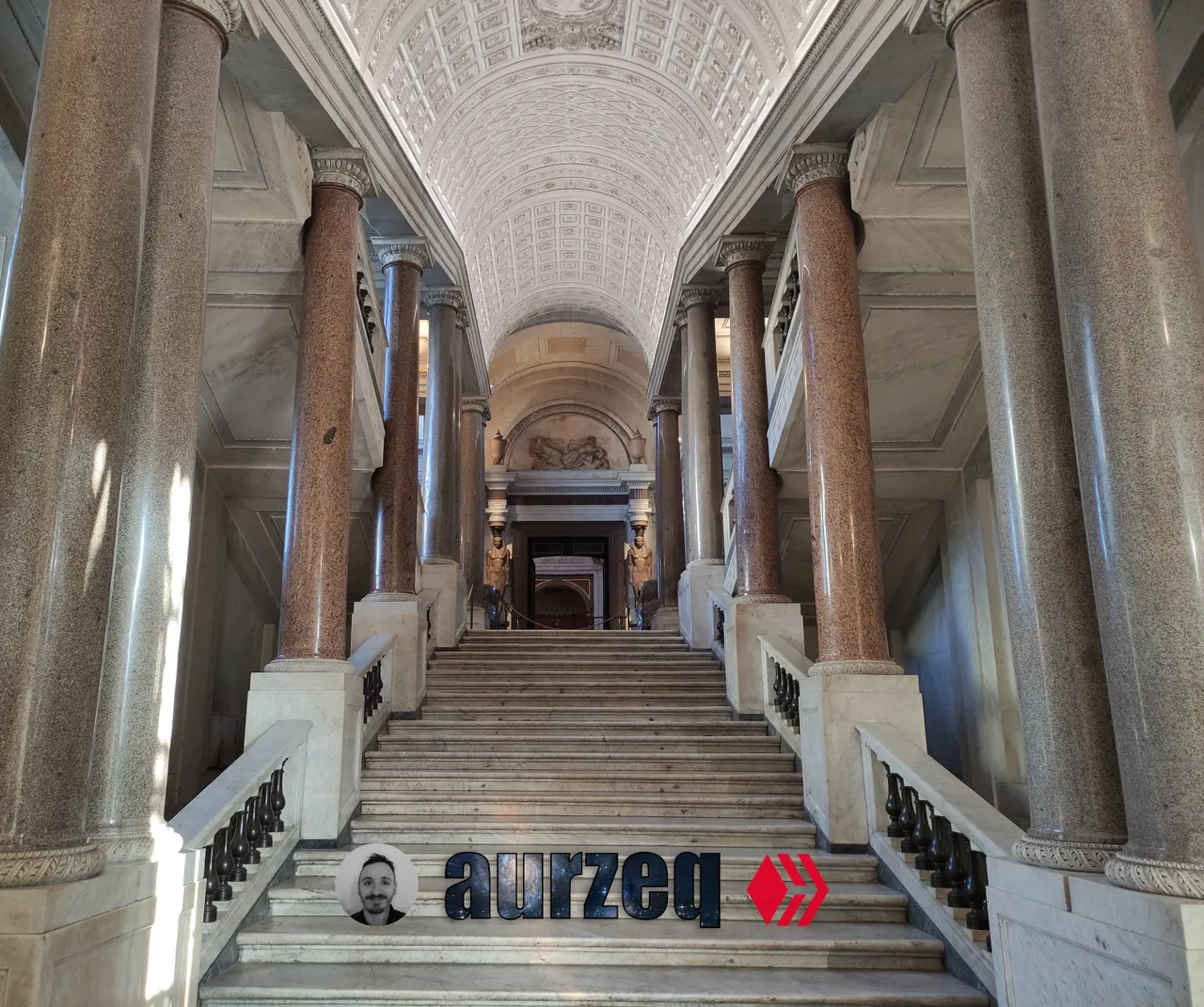
Today I want to share with you the trip I made last week to Vatican City.
I must say that from the point of view of the weather we were very lucky because in the two days we were in Rome there was always the sun, obviously the temperatures were still very low and above all in the morning it was better to cover up.
Oggi voglio condividere con voi il viaggio che ho effettuato settimana scorsa a Città del Vaticano.
Devo dire che dal punto di vista del meteo siamo stati molto fortunati perché nei due giorni che siamo stati a Roma c'è stato sempre il sole, ovviamente le temperature erano comunque molto basse e soprattutto la mattina era meglio coprirsi.
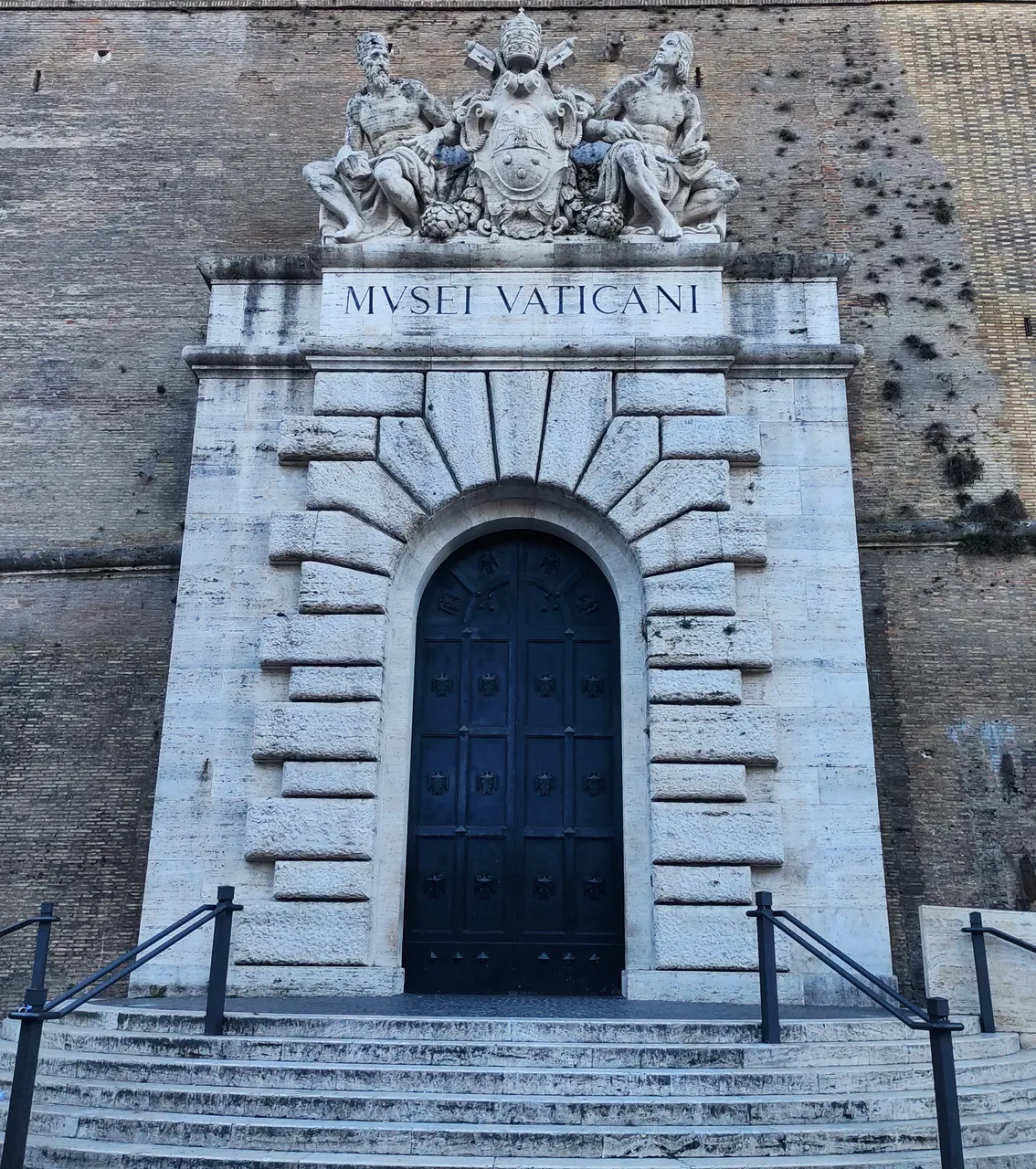
The last time I was in Rome, it was during a business trip. That time, unfortunately, I stayed in Rome for a short time. I did not have the opportunity to visit it properly, and above all, I was unable to visit Vatican City. On the evening of our arrival at the hotel I tried to book tickets for the Vatican museums online, unfortunately they were sold out and the thing that the site recommended was to show up early in the morning at the ticket office and, staying in line for a few hours, try to buy tickets on the spot. Fortunately, as we arrived there very early and probably also because the temperatures were very low, we were able to get the tickets very quickly and so for the first time I was able to enter and visit the Vatican Museums.
L'ultima volta che sono stato a Roma, era durante una trasferta di lavoro. Quella volta purtroppo sono rimasto a Roma per poco tempo Io non ho avuto modo di visitarla per bene, e soprattutto, non ero potuto andare a visitare Città del Vaticano. La sera del nostro arrivo all'hotel ho provato a prenotare i biglietti dei musei vaticani on-line, sfortunatamente però tutti i posti erano esauriti e la cosa che consigliava il sito era quella di presentarsi la mattina presto alla biglietteria e, rimanendo in fila per qualche ora, provare ad acquistare i biglietti sul posto. Fortunatamente siccome siamo arrivati lì molto presto e probabilmente anche perché le temperature erano molto basse, siamo riusciti a prendere i biglietti molto velocemente e così per la prima volta sono riuscito ad entrare e a visitare i Musei vaticani.
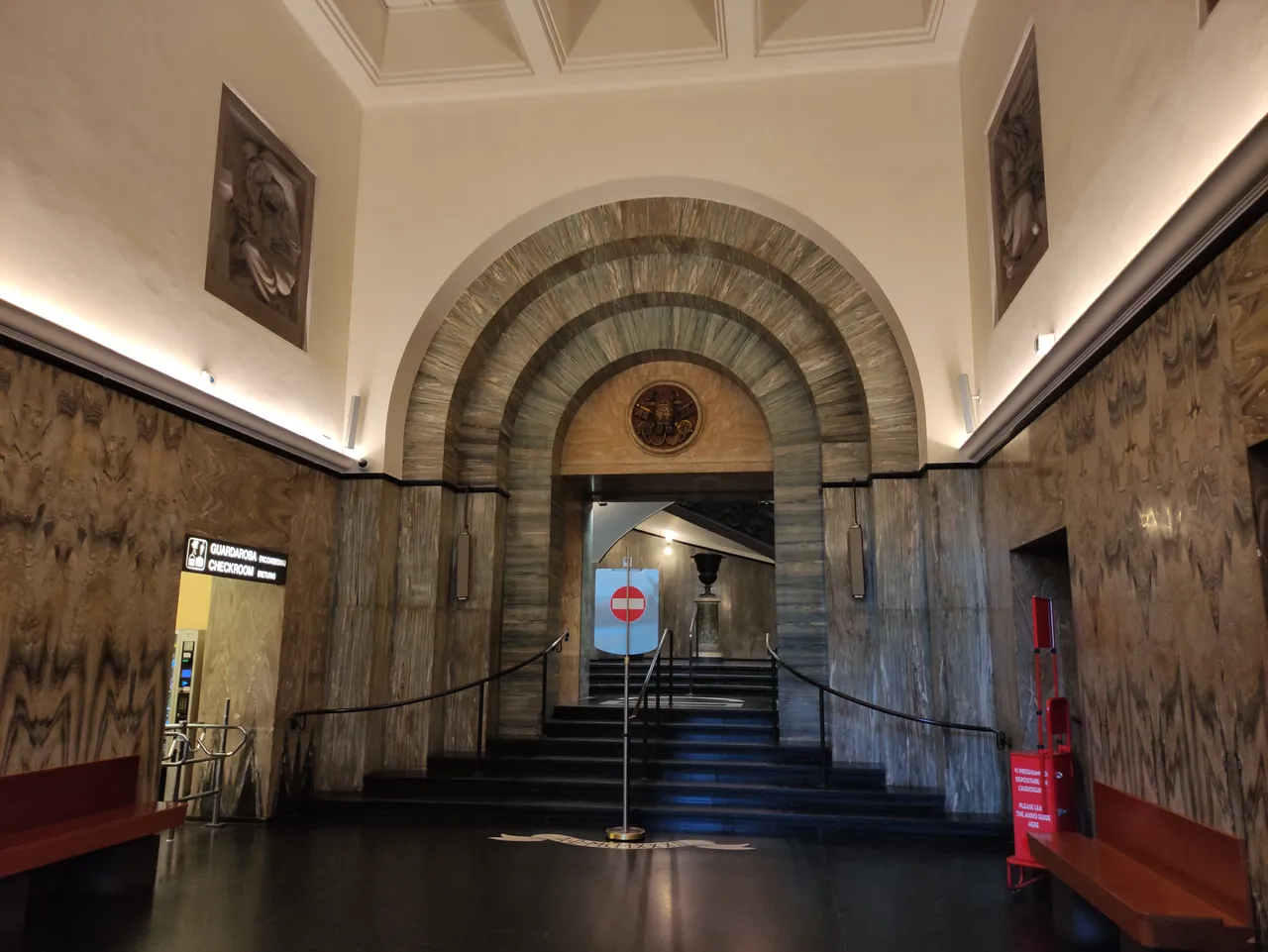
Here I could open a small paragraph on the reason for my visit to he museum. I am not a believer and therefore I went to visit museums simply out of intellectual curiosity. The Vatican collects an immense amount of works of art within it and in my opinion at least once in a lifetime, even if one does not share the religious belief, one should go visiting such a place.
Qui potrei aprire un piccolo paragrafo sul motivo della mia visita ai musei, Io non sono credente e quindi sono andato a visitare i musei semplicemente per curiosità intellettuale. Il Vaticano raccoglie al suo interno una quantità di opere d'arte immensa e secondo me almeno una volta nella vita, anche se uno non dovesse condividere il credo religioso, non ci si può esimere dall'andare a visitare un tale luogo.
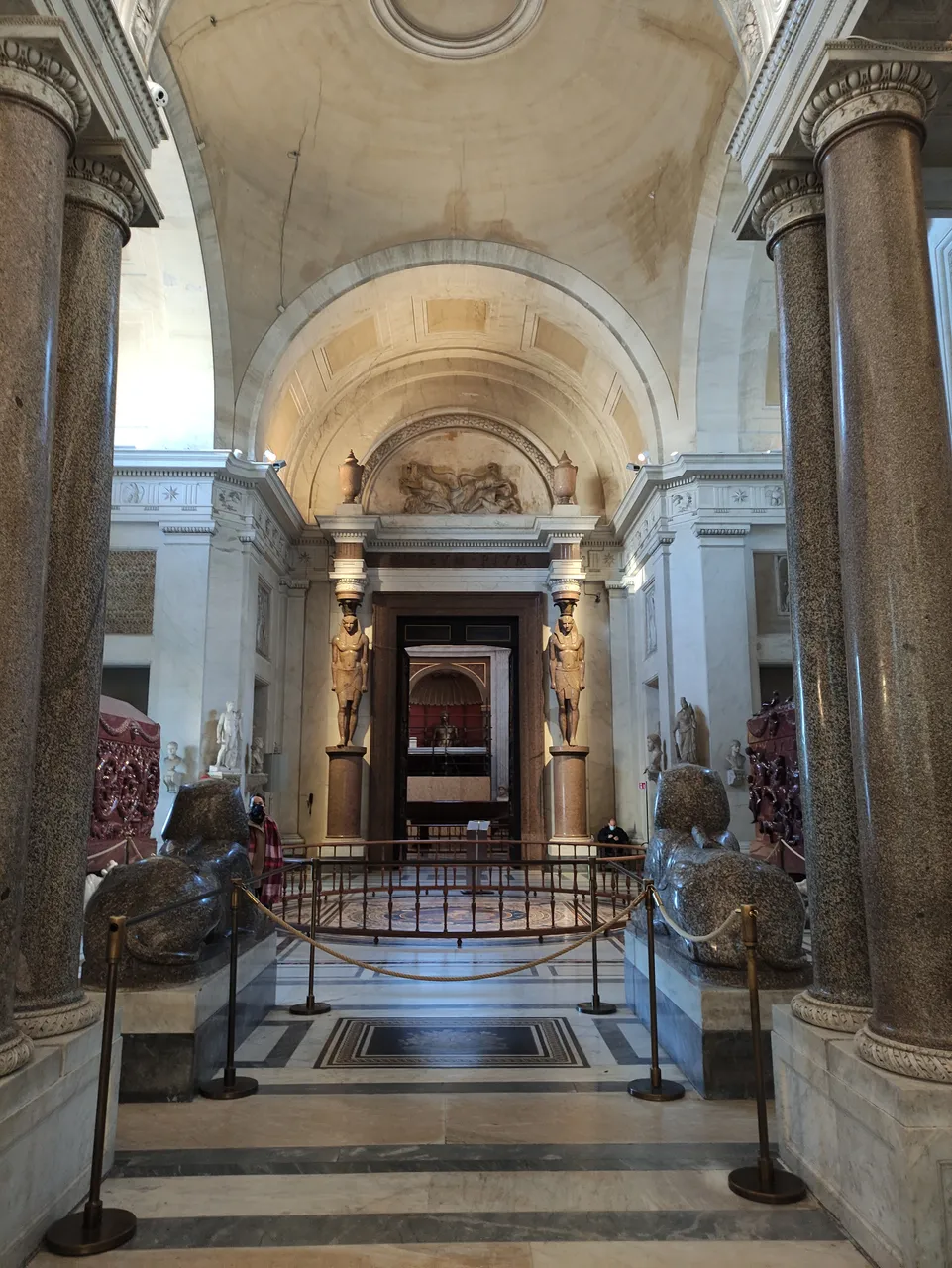
After purchasing the tickets and entering the museums, you go up an escalator that leads to the initial part of the visit. From there you have immediate access to the courtyard of the museum from which you can see the dome of St. Peter in all its magnificence. I have to admit that the show is truly incredible and if it hadn't been so cold I would have been admiring the church for much longer.
Dopo aver acquistato i biglietti ed essere entrati all'interno dei musei, si sale una scala mobile che porta nella parte iniziale della visita. Dal di lì si ha immediatamente accesso al cortile del museo dal quale è possibile osservare la cupola di San Pietro in tutta la sua magnificenza. Devo ammettere che lo spettacolo è veramente incredibile e se non fosse stato così freddo sarei rimasto ad ammirare la chiesa per molto più tempo.

ENG - the descriptions that you find refer to the image immediately below them;
ITA - le descrizioni che trovate fanno riferimento all'immagine subito sotto di esse;
Returning inside you can access the first part of the museum, the one relating to Egyptian art.
Here we have many tablets with the famous hieroglyphs engraved on them, that are some of the first rudiments of writing that the history of humanity has recolection of. These tablets were made of different materials.
Rientrando all'interno si può accedere nella prima parte del museo, quella relativa all'arte egizia.
Qui abbiamo tantissime tavolette con incisi sopra i famosi geroglifici, ossia alcuni dei primi rudimenti di scrittura di cui la storia dell'umanità abbia ricordo. Queste tavolette venivano realizzate in diversi materiali.
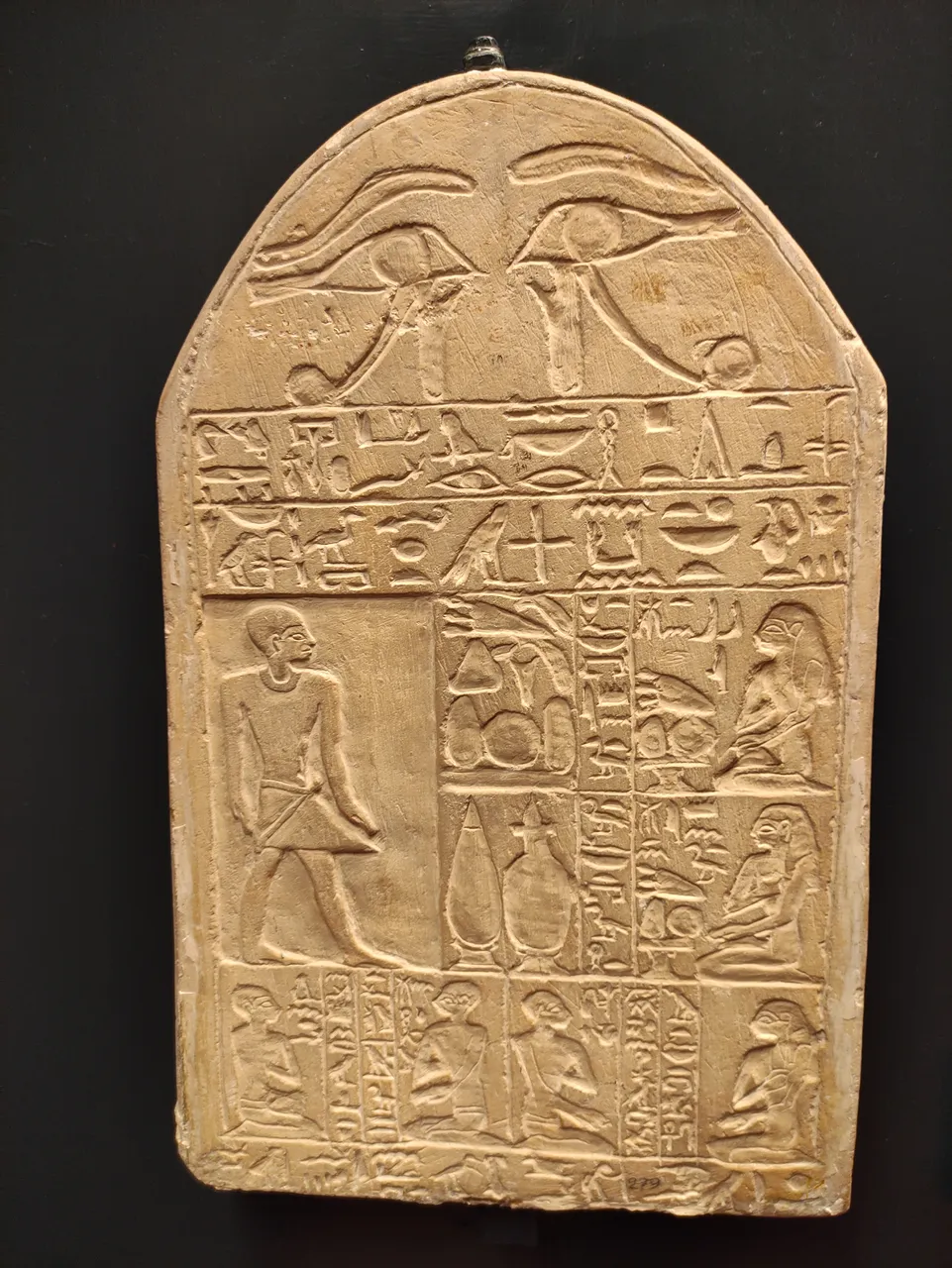
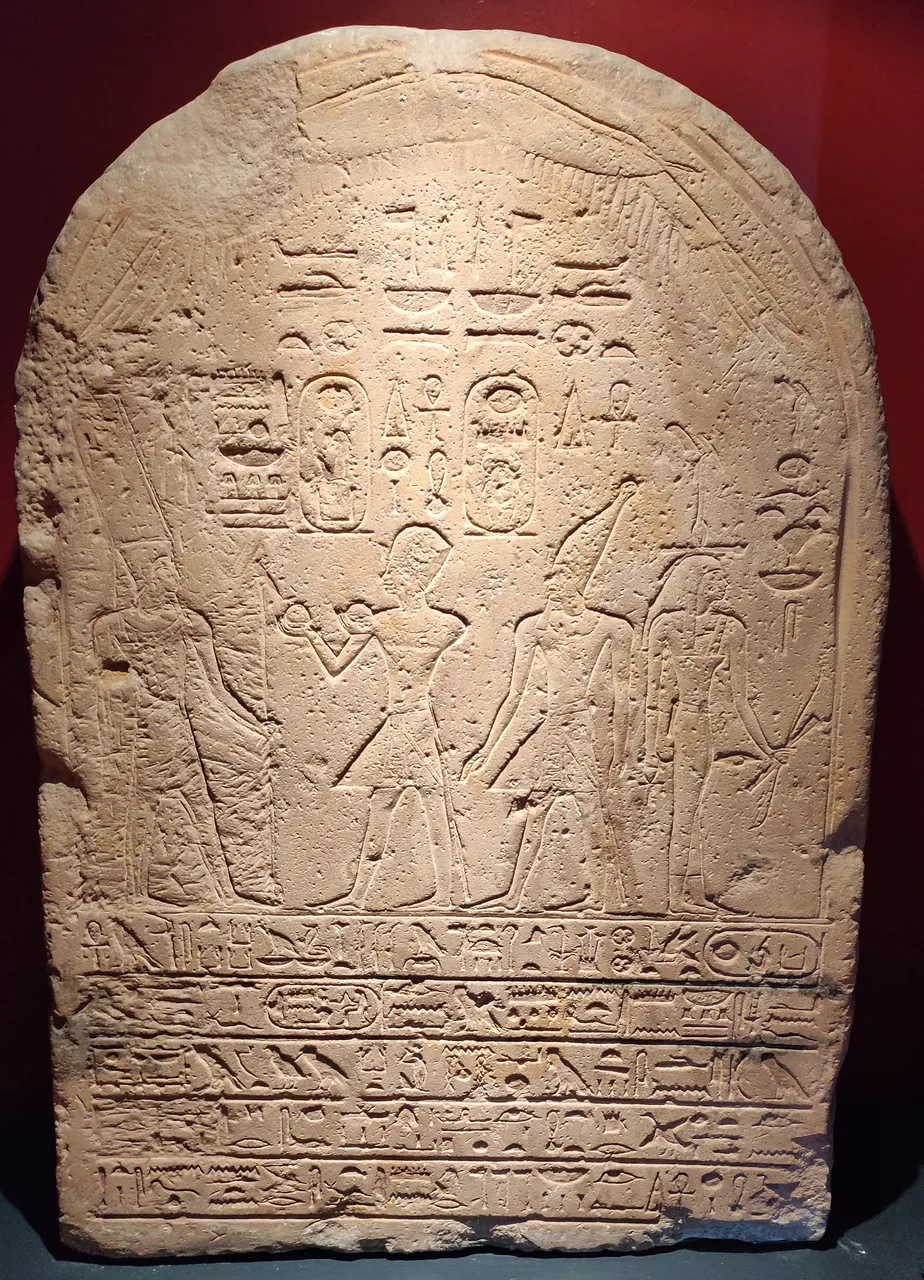
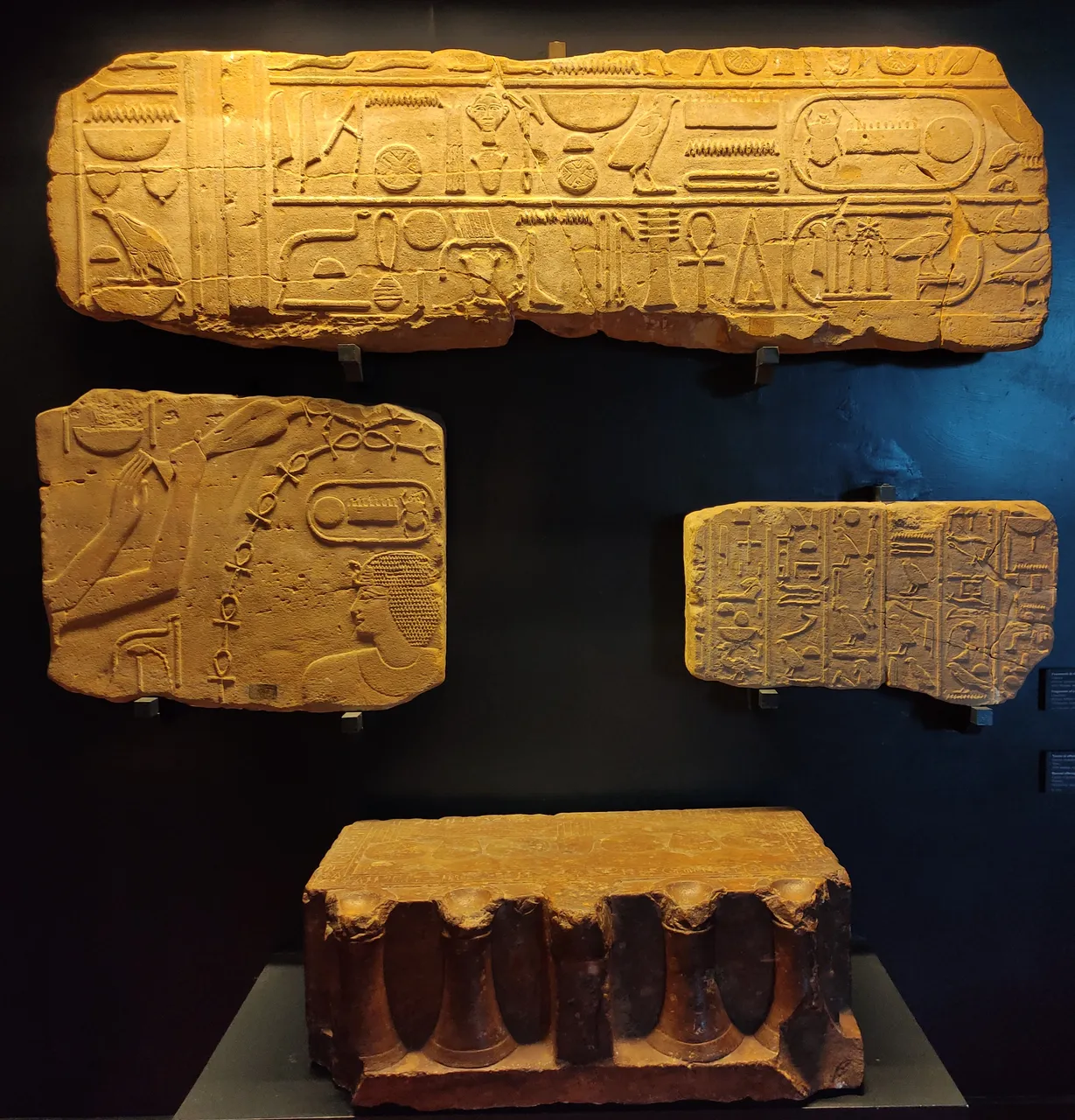
We are talking about objects that come from the VI / XII dynasty for example, therefore more than 2000 years ago, made of limestone.
Si parla di oggetti che provengono dalla VI / XII dinastia per esempio, quindi più di 2000 anni fa, realizzati in calcare.
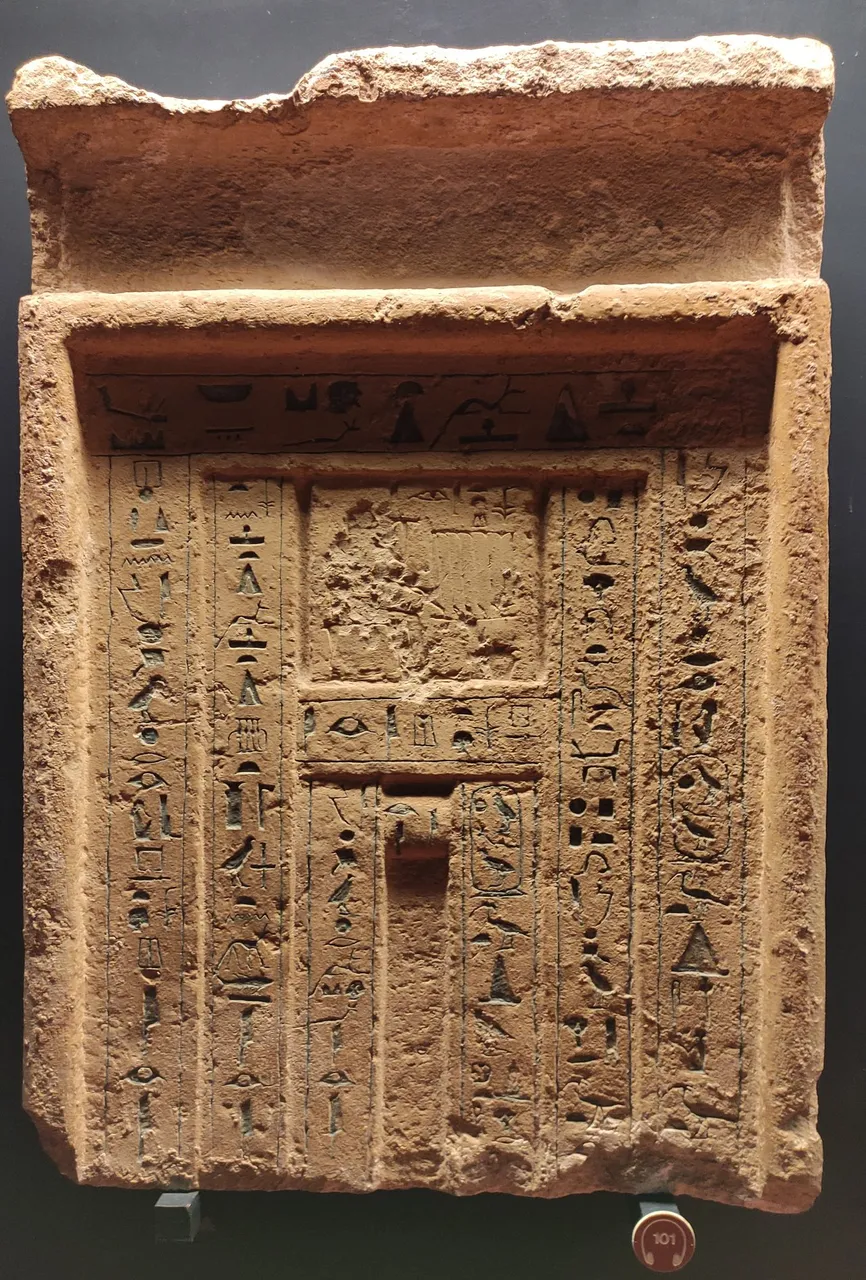
An example is this relief fragment from a tomb also made of limestone and found in the city of Memphis belonging to the XVIII dynasty.
Un esempio è questo frammento di rilievo da una tomba realizzato sempre in calcare e ritrovato nella città di Menfi appartenente alla XVIII dinastia.
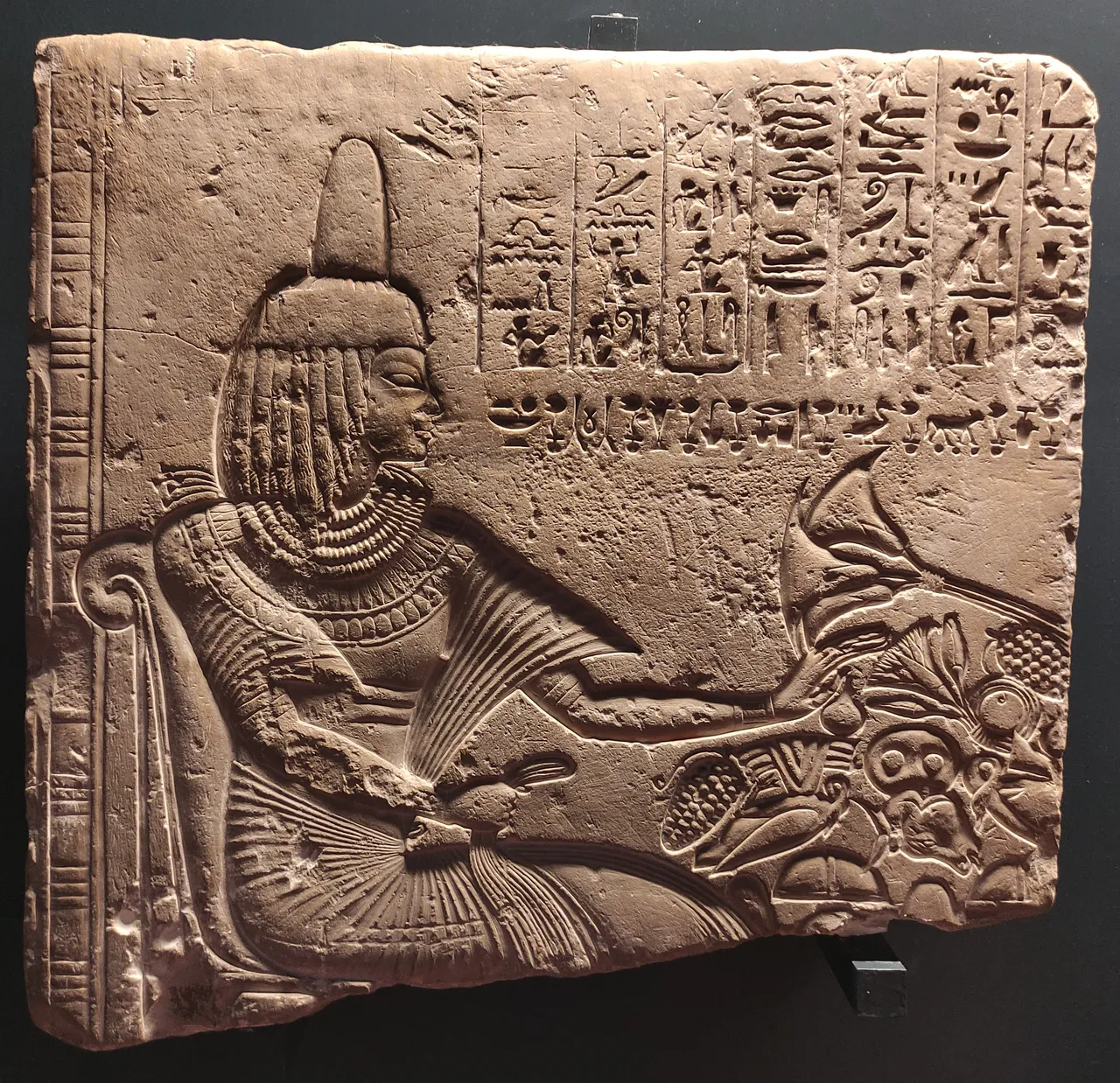
We also have a votive vase dedicated by the viziers Imenmes made of quartzite and belonging to the XIX dynasty that is 1200 years b.C..
Abbiamo anche un vaso votivo dedicato dalle visir Imenmes realizzato in quarzite e appartenente alla XIX dinastia ossia 1200 anni a.C..
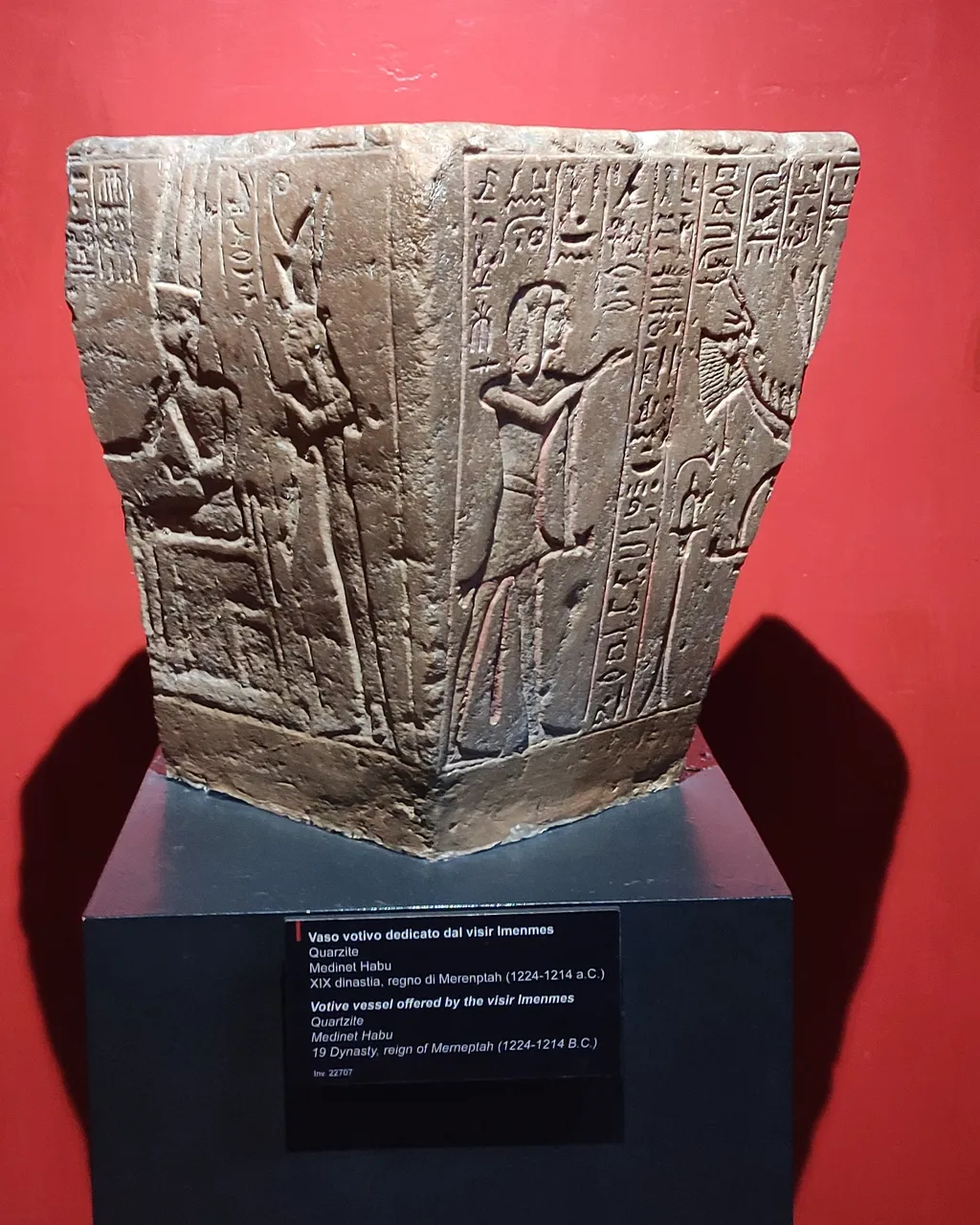
Funerary stele of Ankh-Hapi dating back to the XXVII dynasty found in the city of Memphis and made of limestone with also Aramaic inscriptions inside.
Stele funeraria di Ankh-Hapi risalente alla XXVII dinastia ritrovato nella città di Menfi e realizzata in calcare con anche delle iscrizioni aramaiche al suo interno.

There are also many very well preserved sarcophagi. An example is this fragment of a sarcophagus lid made of basalt dating back to the city of Memphis in the 26th dynasty. The fragment is the upper part of the lid of the anthropoid sarcophagus that belonged to Psammetico, priest in charge of the cult of the lioness goddess Sekhmet. The chest, identified only later as pertaining to the lid, is currently on display in the center of the terrace of the hemicycle. Crafted with great technical skill, the monument is a good example of the art of the Saite age, conceived for those officials whose growing importance and independence can be read in the size and refinement of their funerary equipment. The find was purchased under Pope Gregory XVI from the collection of Silvestro Guidi and was exhibited in the Gregorian Egyptian museum inaugurated in 1839.
Sono presenti inoltre anche molti sarcofaghi veramente ben conservati. Un esempio è questo frammento di coperchio di sarcofago realizzato in basalto risalente alla città di Menfi nella 26esima dinastia. Il frammento è parte superiore del coperchio del sarcofago antropoide appartenuto a Psammetico, sacerdote preposto al culto della dea leonessa sekhmet. la cassa, identificata solo in un secondo momento come pertinente al coperchio, è attualmente in esposizione al centro della terrazza dell'emiciclo. Realizzato con grande abilità tecnica, il monumento è un valido esempio dell'arte dell'età saita, concepita per quei funzionari la cui crescente importanza e indipendenza è leggibile nelle dimensioni e nella raffinatezza del loro equipaggiamento funerario. Il reperto fu acquistato sotto Papa Gregorio XVI dalla collezione di Silvestro Guidi e venne esposto nel museo gregoriano Egizio inaugurato nel 1839.
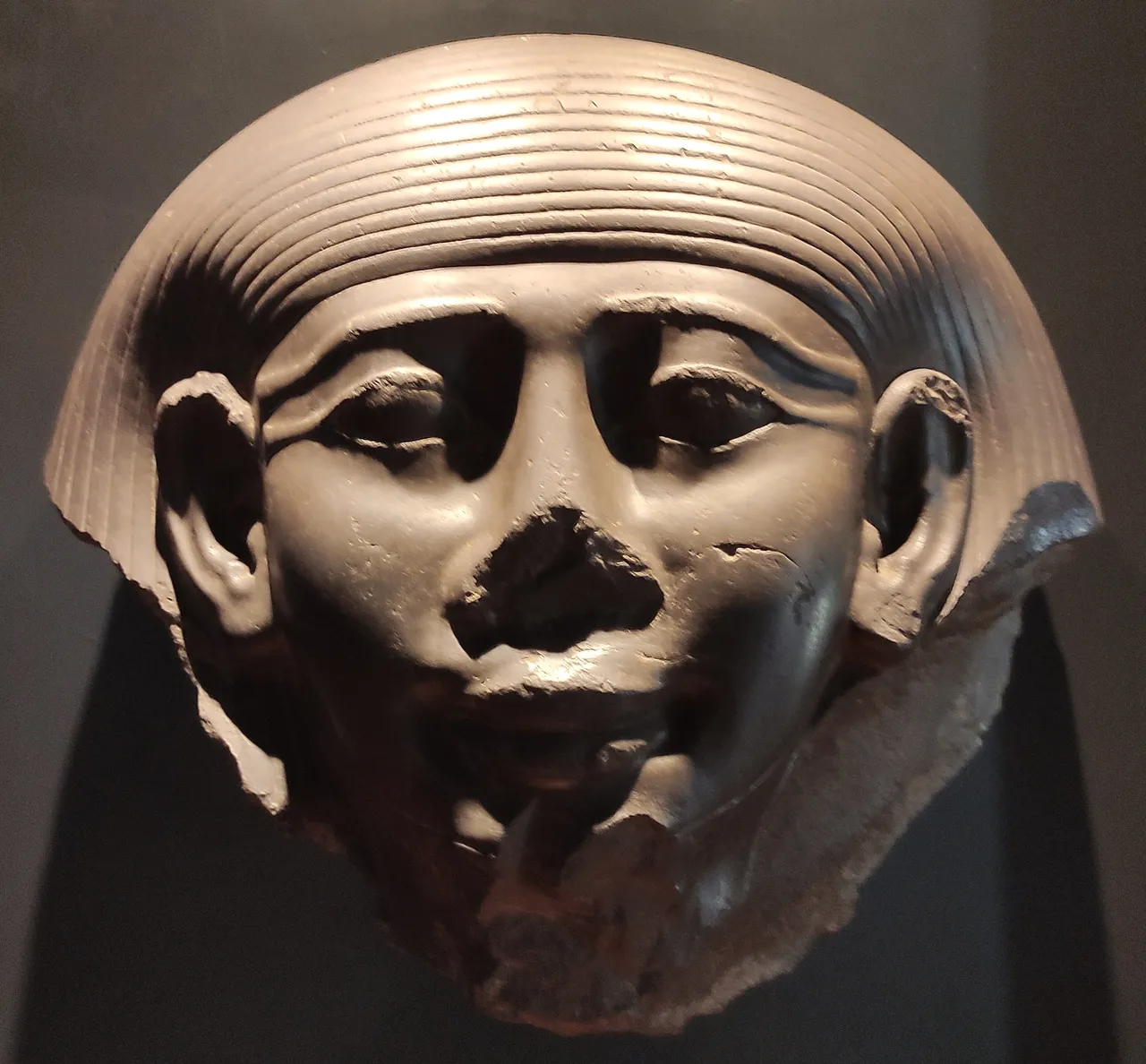
Another example of a sarcophagus is that of Amenhotep, made of wood towards the end of the XXI and the beginning of the XXII dynasty, thought to be in the city of Thebes. This anthropomorphic sarcophagus belongs to the so-called "yellow sarcophagus" typology, so called because their decoration is covered by a layer of yellow plant resin, originally clear, which was supposed to give greater brilliance, a symbol of regeneration. These are particularly richly decorated sarcophagi because in this historical moment the decorated tombs are disappearing and the walls of the sarcophagi become the substitutes.
Altro esempio di sarcofago è quello di Amenhotep, realizzato in legno verso la fine del XXI e l'inizio del XXII dinastia, si pensa nella città di Tebe. Questo sarcofago antropomorfo rientra nella tipologia dei cosiddetti sarcofagi gialli, così chiamati perché la loro decorazione risulta coperta da uno strato di resina vegetale gialla, in origine chiara, che doveva conferire una maggiore brillantezza, simbolo di rigenerazione. Si tratta di sarcofagi particolarmente ricchi di decorazioni perché in questo momento storico vanno scomparendo le tombe decorate e le pareti dei sarcofagi nei diventano i sostituti.
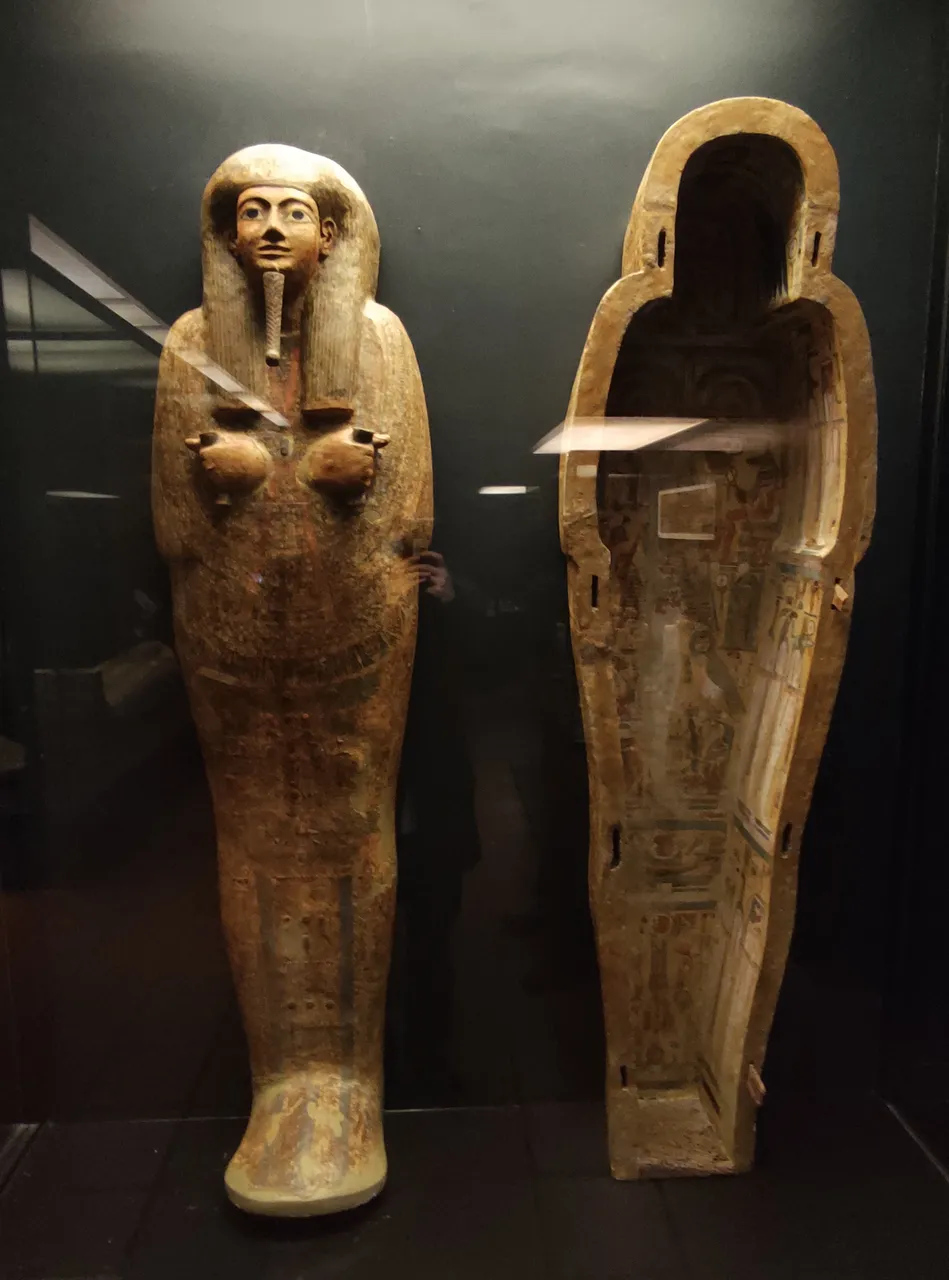

Very interesting is also the so-called book of the dead, that is a collection of formulas that accompany the deceased in his path of regeneration. In ancient Egyptian it bore the name of "book to go out in the day", with reference to the journey made by the dead with the sun God during the night towards the dawn of the new day. Each formula had to be pronounced and had a specific function, to which the title, generally written in red, alluded to. Vignettes, even very worked, often in bright colors, complete the formula. The funerary tradition of the book of the dead, which in the most complete versions includes 192 formulas, appears in the new Kingdom, mid-second millennium b.C., and is linked to the older one of the texts of the pyramids and texts of the sarcophagi. The book of the dead was more generally written on a roll of papyrus, which from the new Kingdom becomes a fundamental element of the funerary equipment. It was placed on or inside the sarcophagus or otherwise within a wooden Osiri figurine.
Molto interessante è anche il cosiddetto libro dei morti, ossia una raccolta di formule che accompagnano il defunto nel suo percorso di rigenerazione. In antico egiziano portava il nome di "libro per uscire nel giorno", con riferimento al cammino compiuto dal morto insieme al Dio sole durante la notte verso l'alba del nuovo giorno. Ciascuna formula doveva essere pronunciata ed aveva una funzione specifica, cui alludeva il titolo, scritto generalmente in rosso. Vignette, anche molto lavorate, spesso in colori vivaci, completano la formula. La tradizione funeraria del libro dei morti, che nelle versioni più completa arriva a comprendere 192 formule, compare nel nuovo Regno, metà secondo millennio a.C., e si riallaccia a quella più antica dei testi delle piramidi e testi dei sarcofagi. Il libro dei morti era più generalmente scritto su un rotolo di papiro, che dal nuovo Regno diventa un elemento fondamentale del corredo funerario. Esso era posto sopra o dentro il sarcofago o altrimenti all'interno di una statuina lignea di Osiri.

Another noteworthy sarcophagus is that of Djedmut, a singer of the god Amon Ra of Kamak, and which is dated to the beginning of the XXII dynasty. In this historical period, of serious economic crisis, the sarcophagus had become the most important element of the kit and what had been the iconographic and textual apparatus on the walls of the tomb was literally translated onto the entire sarcophagus, as previously mentioned. Obvious limits of space meant that the scenes and the texts were synthesized, going to occupy the entire available surface in a sort of horror vacui. The sarcophagus exhibited here is the external one, which corresponded to an internal one, of smaller dimensions, now lost, in which the mummy was placed.
Altro sarcofago degno di nota è quello di Djedmut, una cantatrice del Dio Amon Ra di kamak, e che viene datato all'inizio della XXII dinastia. In questo periodo storico, di grave crisi economica, il sarcofago era diventato l'elemento del corredo più importante è quello che era stato l'apparato iconografico e testuale sulle pareti della tomba veniva letteralmente traslato sull'intero sarcofago, come detto precedentemente. Evidenti limiti di spazio fecero sì che le scene e i testi fossero sintetizzati, andando ad occupare l'intera superficie a disposizione in una sorta di horror vacui. Il sarcofago qui esposto è quello esterno, cui corrispondeva uno interno, di minori dimensioni, andato perduto, in cui era deposta la mummia.

In this photo we see instead some amulets, that for the ancient Egyptians could be defined as a sort of spell, often written with a magic formula or a symbolism, to counteract a spell or ensure a benefit to the wearer. The Egyptians commonly wore amulets for protection or aid, both alive and dead. Some were placed directly on the deceased and between the bandages, to ensure that the body remained intact and could peacefully enter existence in the afterlife. The effectiveness of an amulet depended on the shape, material and even color. The so-called heart scarab, a typical amulet placed on the mummy, appears in the Middle Kingdom. It is a large Scarab, positioned on the heart of the deceased and written on the base with chapter 30 of the book of the dead, to protect the heart and ensure the dead person a positive judgment before the divine court.
In questa foto vediamo invece degli amuleti che per gli antichi egizi potevano definirsi come una sorta di incantesimo, spesso iscritto con una formula magica o una simbologia, per contrastare un maleficio o assicurare un beneficio a chi lo indossava. Gli egizi indossavano comunemente amuleti come protezione o aiuto, sia da vivi sia da morti. Alcuni venivano posti direttamente sul defunto e tra le bende, per garantire che il corpo restasse integro e potesse serenamente accedere all'esistenza nell'aldilà. L'efficacia di un amuleto dipendeva dalla forma, dal materiale e anche dal colore. Il cosiddetto Scarabeo del cuore, tipico amuleto posto sulla mummia compare nel Medio regno. Si tratta di un grande Scarabeo, posizionato sul cuore del defunto è scritto sulla base con il capitolo 30 del libro dei morti, per proteggere il cuore e assicurare al morto un giudizio positivo davanti al tribunale divino.
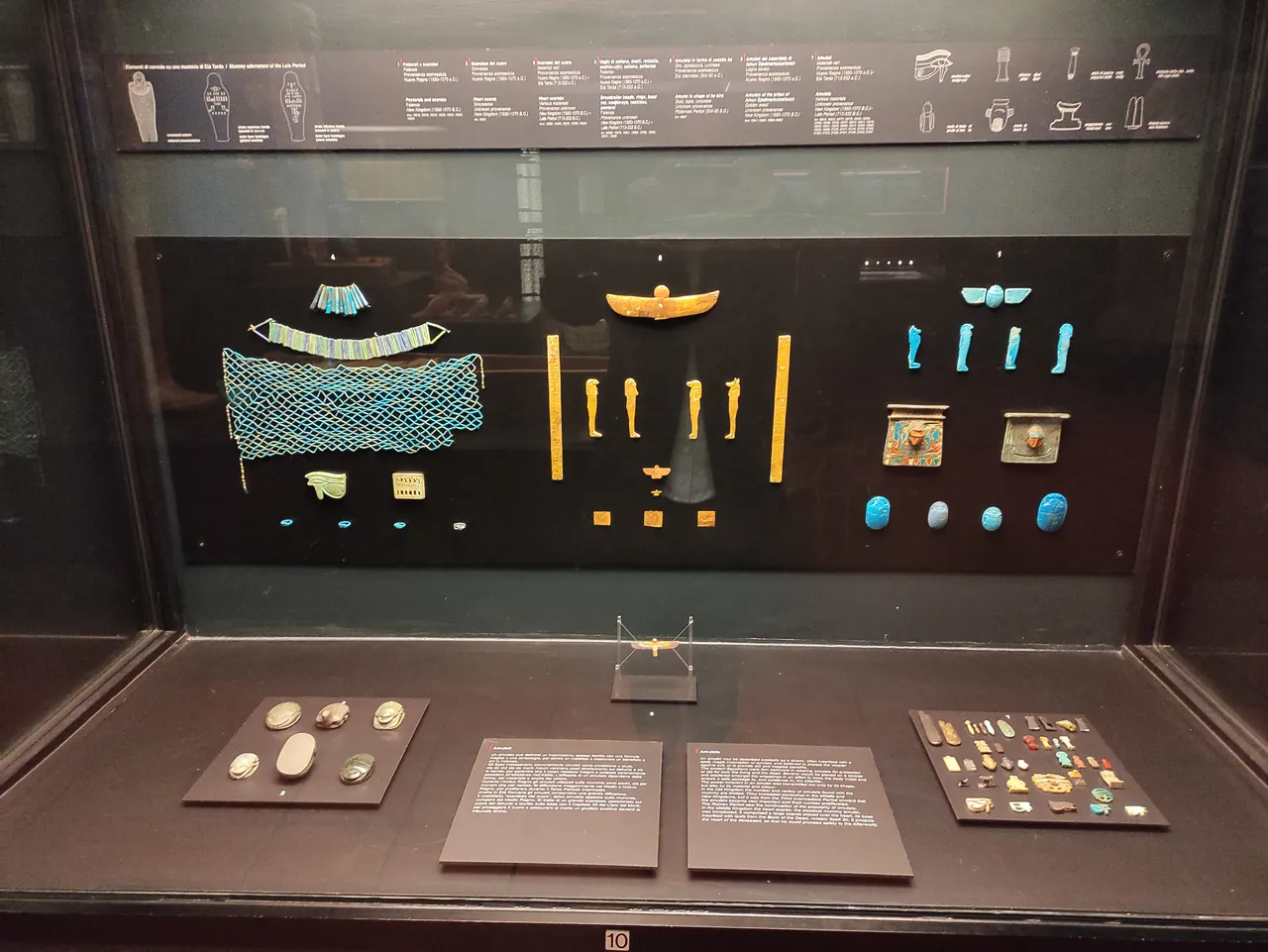
Another noteworthy topic and another really interesting technique of the ancient Egyptians is that of embalming .
In the funerary speculation of Ancient Egypt, the preservation of the corpse was fundamental, because the ba of the deceased would have to rejoin the body after death.
The study of the Egyptian mummies themselves has made it possible to reconstruct their technique over the centuries. On the corpse of the mother of Pharaoh Cheops, the extraction of organs is attested for the first time, which would have guaranteed a better preservation of the body. The practice of removing the brain, however, was found only in the Middle Kingdom, but it was not preserved, because it was the heart that was considered the center of physical, emotional and intellectual life. The embalming technique reached its apex during the XXI dynasty, and then became less elaborate over time until it disappeared with the Arab conquest of Egypt in 641 BC. The embalming procedure lasted about 70 days, during which the corpse it was entrusted to appointed priests. The body was washed, gutted, immersed in natron ("divine salt") for about 40 days, in order to completely dehydrate it. The emptied chest cavity was filled with wraps of bandages and packets containing resins, the skin softened and perfumed with oils and fragrant substances. The body was then wrapped in linen bandages. Before placing the mummy inside the sarcophagus, a mask was placed on his head to protect the face.
Altro argomento degno di nota e altra tecnica veramente interessante degli antichi egizi è quella dell'imbalsamazione.
Nella speculazione funeraria dell'Antico Egitto la conservazione del cadavere era fondamentale, perché il ba del defunto si sarebbe dovuto ricongiungere al corpo dopo la morte.
Lo studio delle stesse mummie egizie ha permesso di ricostruirne la tecnica attraverso i secoli. Sul cadavere della madre del faraone Cheope è attestata per la prima volta l'estrazione degli organi, che avrebbe garantito una migliore conservazione del corpo. Soltanto del Medio regno si ritrova invece la pratica di rimozione del cervello, che non era però conservato, perché era il cuore ad essere considerato il centro della vita fisica affettiva e intellettuale. La tecnica dell'imbalsamazione raggiunse il suo Apice durante la XXI dinastia, per poi divenire con il tempo meno elaborata fino a scomparire con la conquista araba dell'Egitto nel 641 a.C.. La procedura di imbalsamazione durava circa 70 giorni, durante i quali il cadavere era affidato a sacerdoti preposti. Il corpo era lavato, eviscerato, immerso nel natron ("sale divino") per circa 40 giorni, così da disidratarlo completamente. La cavità toracica svuotata era riempita con involti di bende e pacchetti contenenti resine, la pelle ammorbidita e profumata con oli e sostanze fragranti. Si procedeva quindi all'avvolgimento del corpo in bende di lino. Prima di adagiare la mummia all'interno del sarcofago sulla sua testa era posta una maschera come protezione del volto.
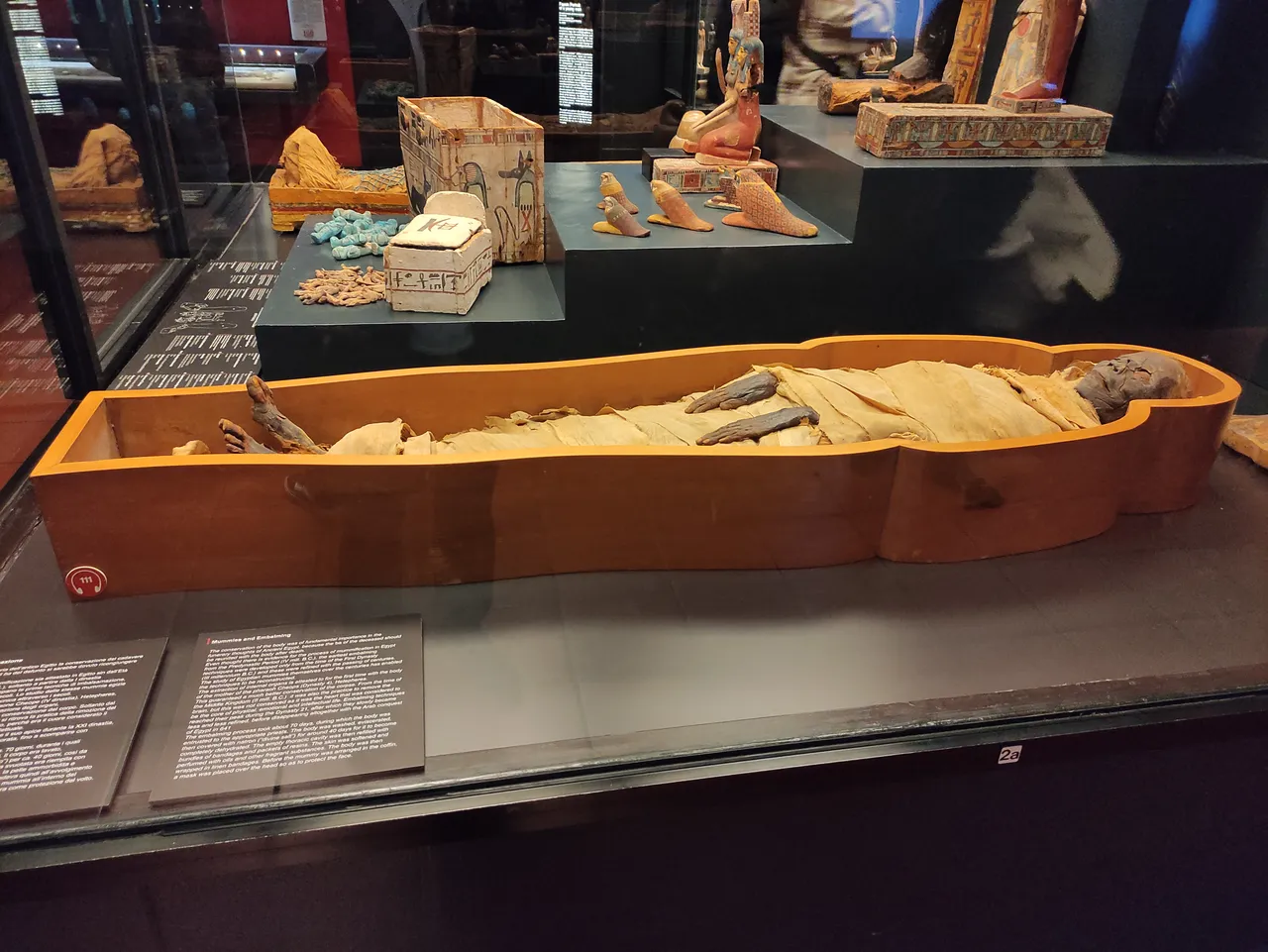
In this photo you can see the reconstruction of a funerary kit from the third intermediate period, i.e. the period from 1070 BC. to 712 BC. This kit is made up of statuettes of various divinities, such as Osiri, the jackal god Anubis, the bird Ba, Isis and Nephthys, the God Sokari.
In questa foto si può osservare la ricostruzione di un corredo funerario del terzo periodo intermedio, ossia il periodo che va dal 1070 a.C. al 712 a.C.. Tale corredo è composto da statuette di varie divinità, come Osiri, il Dio sciacallo Anubi, l'uccello Ba, Iside e Nefti, il Dio Sokari.
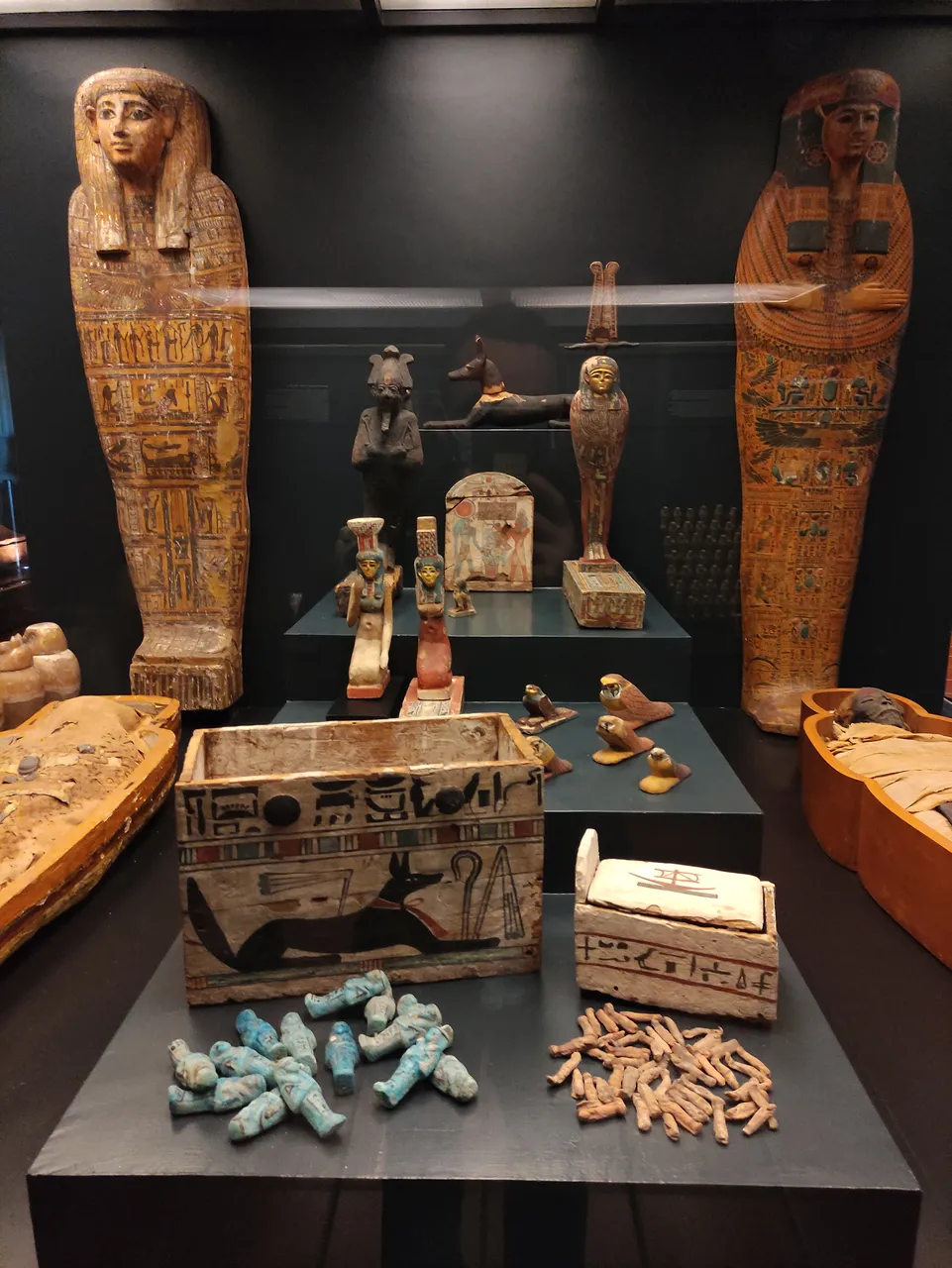
The Egyptian influence is also very important in Roman times, so much so that it can be found in many works commissioned by various emperors, such as the statue of Antinous.
This statue, made of Parian marble, represents Antinous, a favorite of the emperor Hadrian, who died in the waters of the Nile in 130 AD, near the place where the emperor founded the city of Antinopoli in his honor. At the behest of the emperor, Antinous was deified and his cult spread rapidly in all the provinces of the empire, especially between 133 and 138 AD, the year of Hadrian's death. About a hundred images of the young man are now known to archaeologists, who have classified them into different types. The iconographic model of the specimen present in the museums is that of the osiri-antinous, with which we want to express the royal and divine nature of the character. The statue was found in 1739 in the area of the "Cento Camerelle" in Villa Adriana in Tivoli, where, according to recent hypotheses, a place of worship dedicated to him must have been built. Donated to Benedict XIV, it was placed in the Capitoline museum in 1742. Gregory XVI will then have it transferred to the Vatican for the new Egyptian museum.
L'influenza egizia è molto importante anche in epoca romana tanto che può essere ritrovata in molte opere commissionate da vari imperatori, come ad esempio la statua di Antinoo.
Tale statua, realizzata in marmo pario, rappresenta Antinoo, favorito dell'imperatore Adriano, morto nelle acque del Nilo nel 130 d.C., nei pressi del luogo dove l'imperatore fondò in suo onore la città di Antinopoli. Per volere dell'imperatore, Antinoo fu divinizzato e il suo culto si diffuse rapidamente in tutte le province dell'impero, soprattutto tra il 133 e il 138 d.C., anno della morte di Adriano. Circa un centinaio di immagini del giovane sono oggi note agli archeologi, che le hanno classificate in diverse tipologie. Il modello iconografico dell'esemplare presente all'interno dei musei è quello del osiri-antinoo, con il quale si vuole esprimere la natura regale e Divina del personaggio. La statua fu rinvenuta nel 1739 nell'area delle "Cento Camerelle" a Villa Adriana a Tivoli, dove, secondo recenti ipotesi, doveva sorgere un luogo di culto a lui dedicato. Donata a Benedetto XIV, fu nel 1742 collocata nel museo capitolino. Gregorio XVI la farà poi trasferire in Vaticano per il nuovo museo egizio.

Below are some other sculptures of predominantly Egyptian inspiration found in Roman times including a statue of the Nile made of marble which was found in Rome towards the end of the first beginning of the second century after Christ.
Di seguito alcune altre sculture di ispirazione prevalentemente egizia rinvenute in epoca romana tra cui una statua del Nilo realizzata in marmo è rinvenuta a Roma verso la fine del primo inizio secondo secolo dopo Cristo.
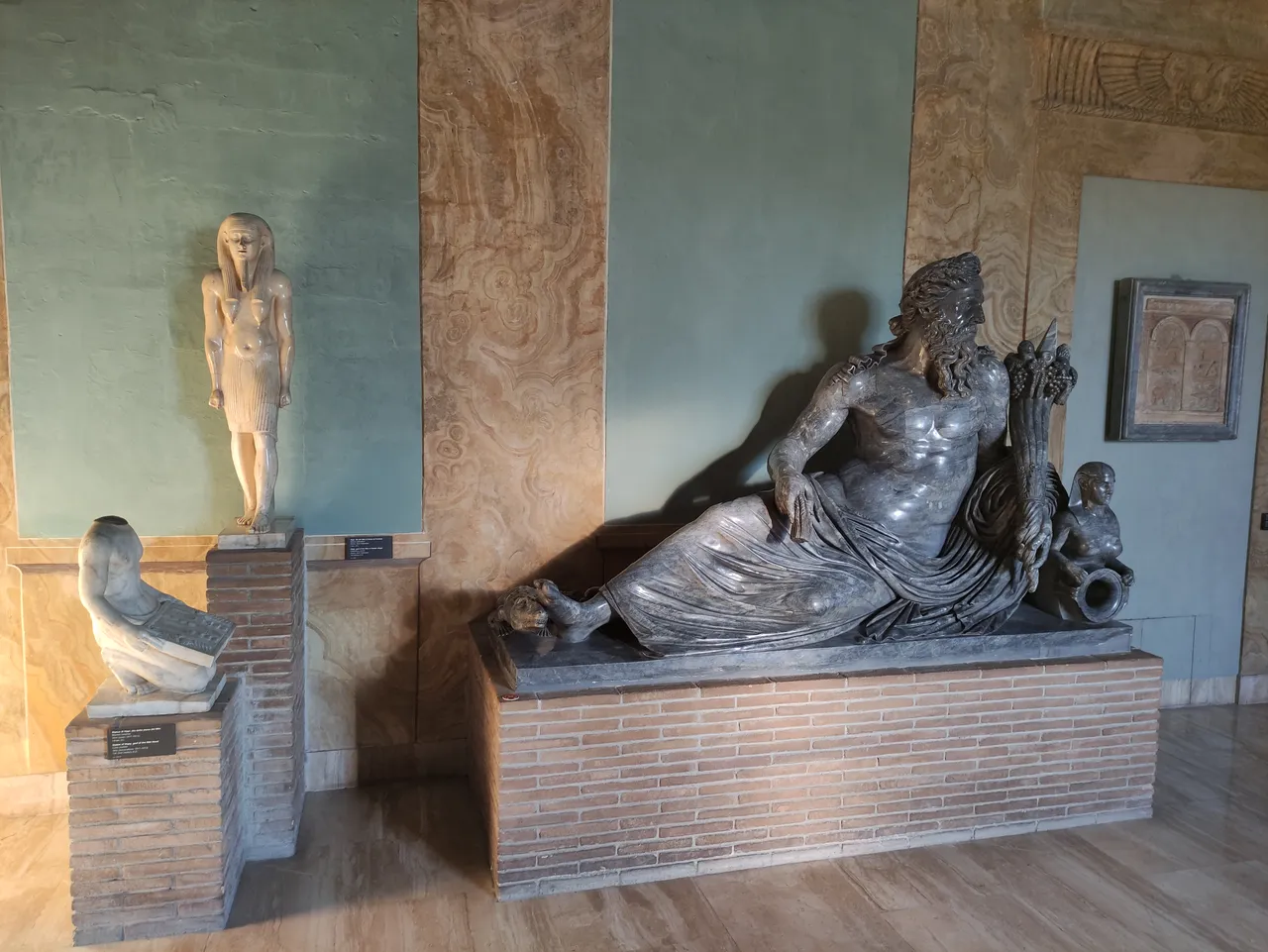
A statue of the god Anubis made of Parian marble.
Una statua del dio Anubi realizzata in marmo pario.
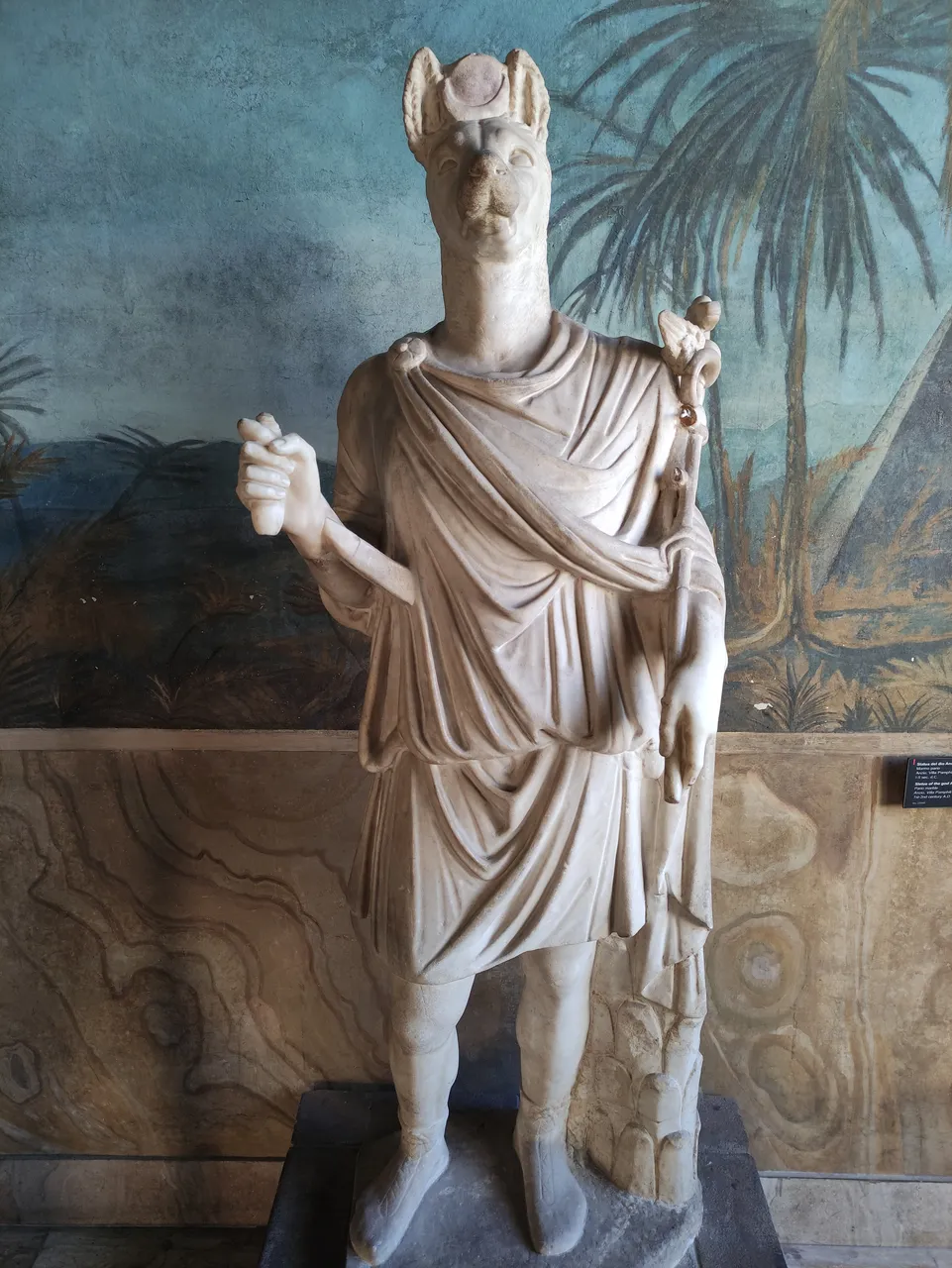
A statue of the baboon of the god thot made of sandstone.
Una statua del babbuino del dio thot realizzata in arenaria.
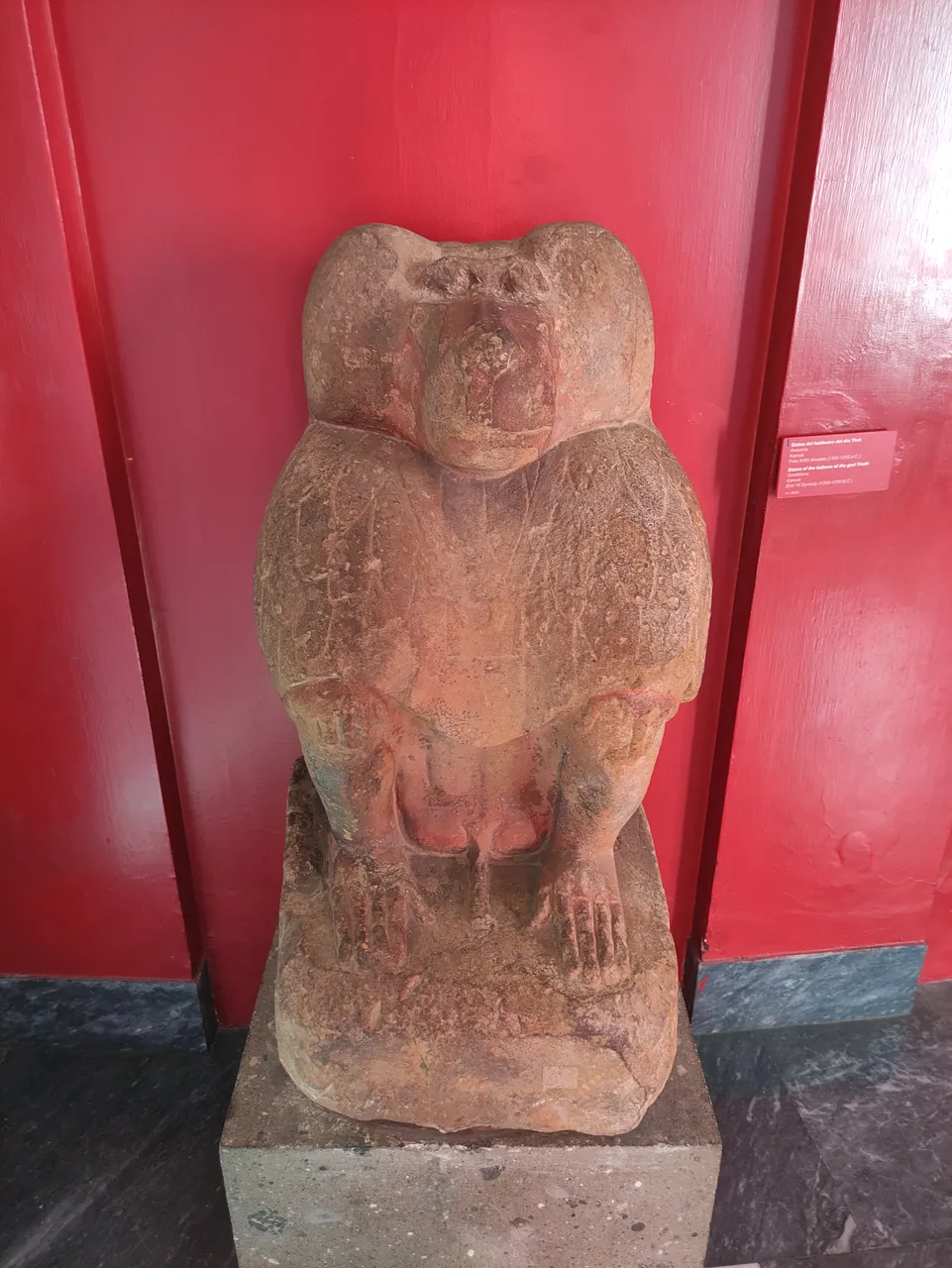
The two statues of Ptolemy II and Arsinoe II were found in 1714 in Rome in the Vigna Verospi, the ancient site of the "Giardini di Sallustio". According to the pharaonic iconographic tradition, the statues depict Ptolemy II and his sister-wife Arsinoe II. Originally erected in Heliopolis, they were preserved by the Lagide ruler to celebrate the divinization of Arsinoe II which took place after his death, in the year 15 of his reign. According to an accredited hypothesis, the two statues were brought to Rome, together with the statue of Queen Tuia, by the emperor Caligula, who had them erected in the "Giardini di Sallustio" to decorate a building consecrated to his royalty and to the deification of his sister marries Drusilla, who, as the Ptolemaic ruler did towards Arsinoe, divinized after death. To reinforce the parallelism with Ptolemy II, Caligula had a second statue of Arsinoe II made, but consecrating it to his sister Drusilla.
Le due statue di Tolomeo II e Arsinoe II sono state rinvenute nel 1714 a Roma nella Vigna Verospi, L'Antica sede dei "Giardini di Sallustio". Le statue raffigurano, secondo la tradizione iconografica faraonica, Tolomeo II e la sua sorella-sposa Arsinoe II. Erette originariamente a Eliopoli, furono conservate dal sovrano lagide per celebrare la divinizzazione di arsinoe II avvenuta dopo la sua morte, nell'anno 15 di regno. Secondo un'accreditata ipotesi, le due statue sarebbero state portate a Roma, insieme alla statua della regina Tuia, dall'imperatore Caligola, che le fece erigere nel "Giardini di Sallustio" per decorare un edificio consacrato alla sua regalità e alla divinizzazione della sua sorella sposa Drusilla, che, così come fece il sovrano tolemaico nei confronti di Arsinoe, divinizzo dopo la morte. Per rafforzare il parallelismo con Tolomeo II, Caligola avrebbe fatto realizzare una seconda statua di Arsinoe II, consacrandola però alla sorella Drusilla.
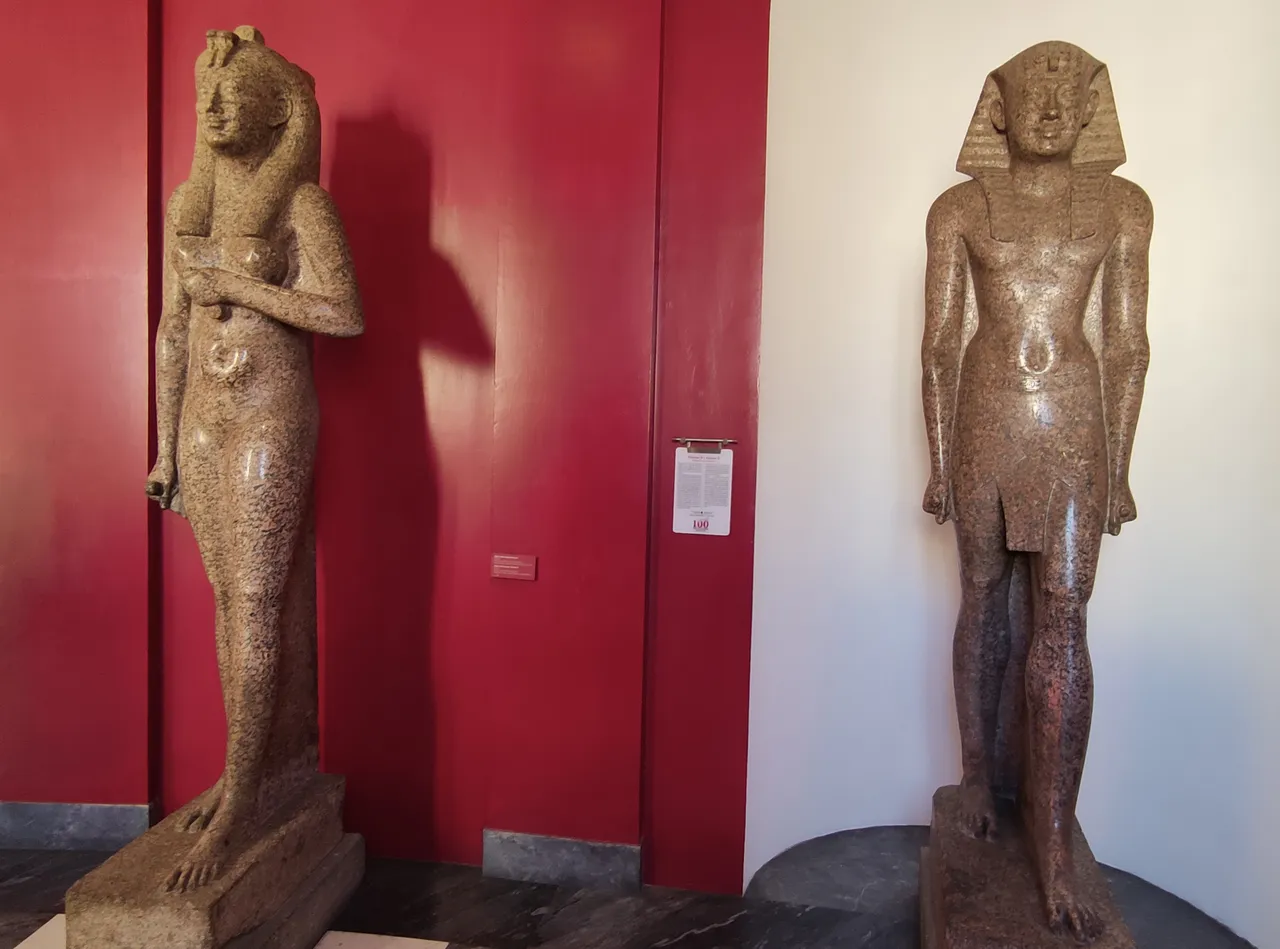
Another very interesting element is the bust of the god Serapis, made of basalt and found in Rome in the 2nd century AD. The God Serapis is to be understood as a composite deity of the Egyptian and Hellenistic world, introduced at the beginning of the Ptolemaic era. The new God was created to establish a bridge between these two cultures. Depicted anthropomorphic, with Greek dress and hair, bearded, and with a tall modio as a headdress. Its cult center was the great Serapeum of Alexandria, which became an important pilgrimage site for the whole Mediterranean world until its destruction by order of the emperor Theodosius in 389 AD.
Altro elemento molto interessante è il busto del dio Serapide, realizzato in basalto e rinvenuto a Roma nel II secolo d.C.. Il Dio Serapide è da intendersi come una divinità composita del mondo Egizio ed Ellenistico, introdotta all'inizio dell'epoca tolemaica. Il nuovo Dio fu creato per stabilire un ponte tra queste due culture. Raffigurato antropomorfo, con veste e capigliatura alla greca, barbato, e con un modio alto come copricapo. Il suo centro di culto era il grande Serapeo di Alessandria, che divenne un luogo di pellegrinaggio importante per tutto il mondo Mediterraneo fino alla sua distruzione per ordine dell'imperatore Teodosio nel 389 d.C..
Here are some photos of some other works that we saw in the museum:
Di seguito alcune foto di altre opere che abbiamo visto nel museo:
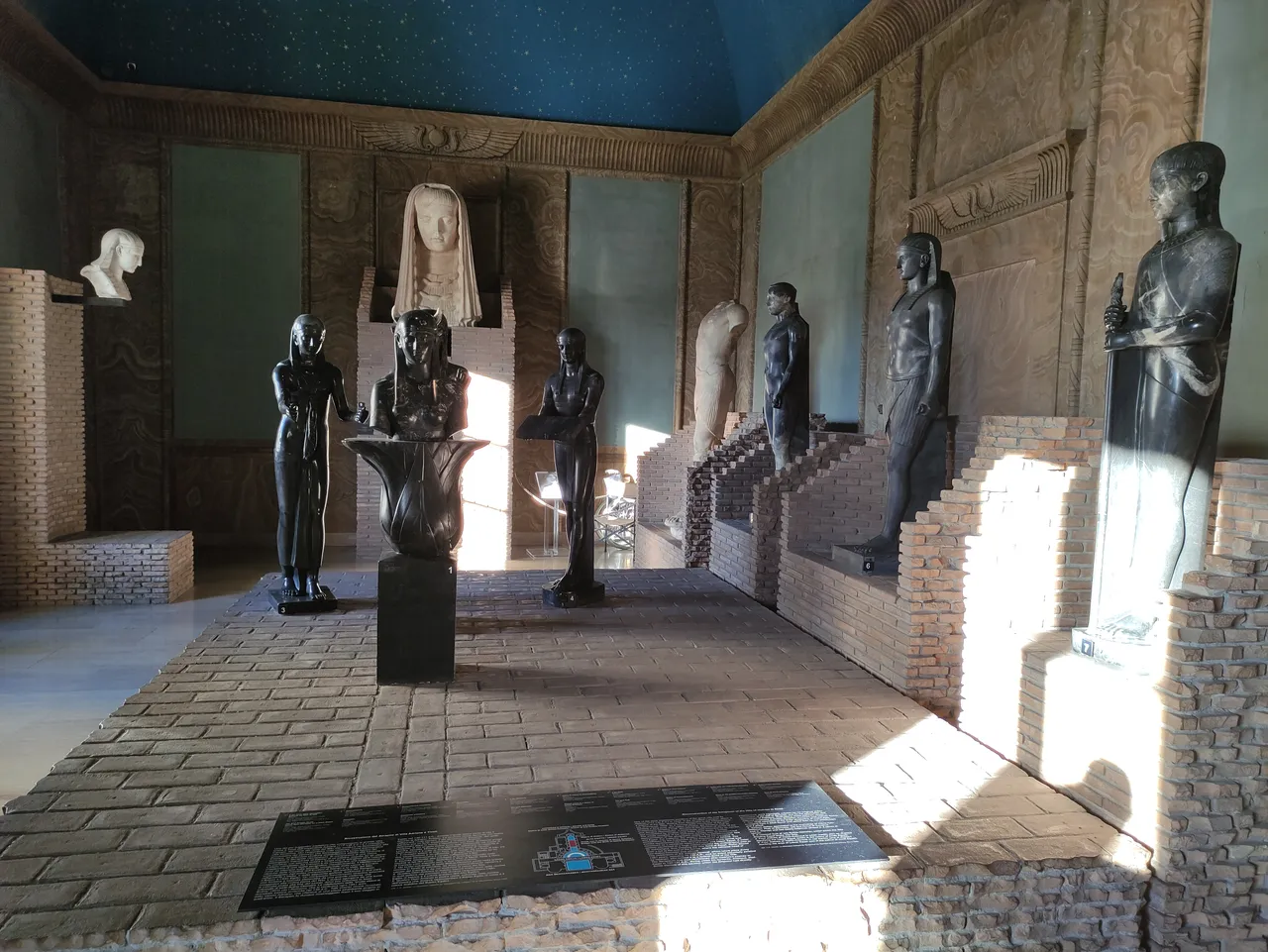
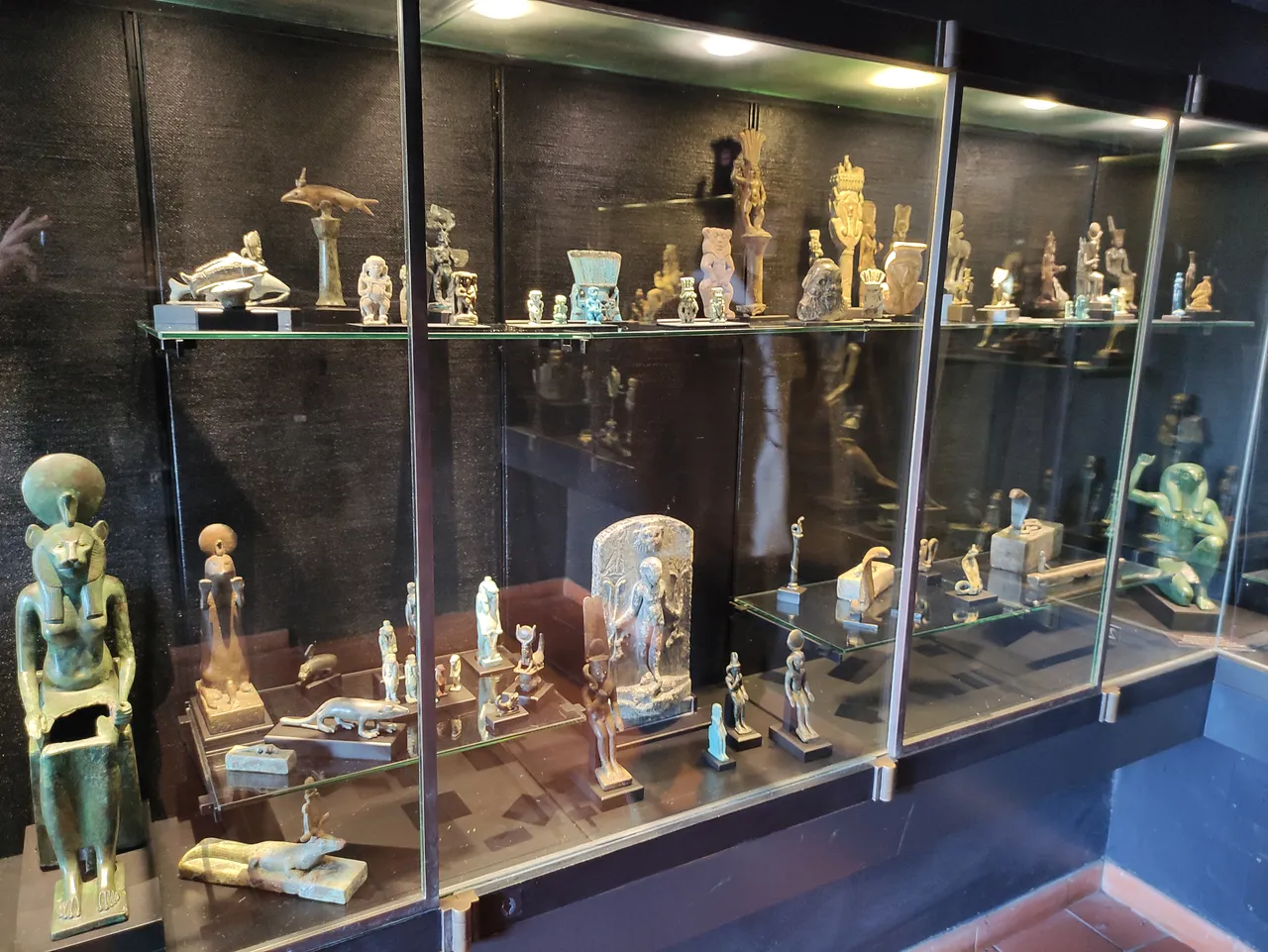
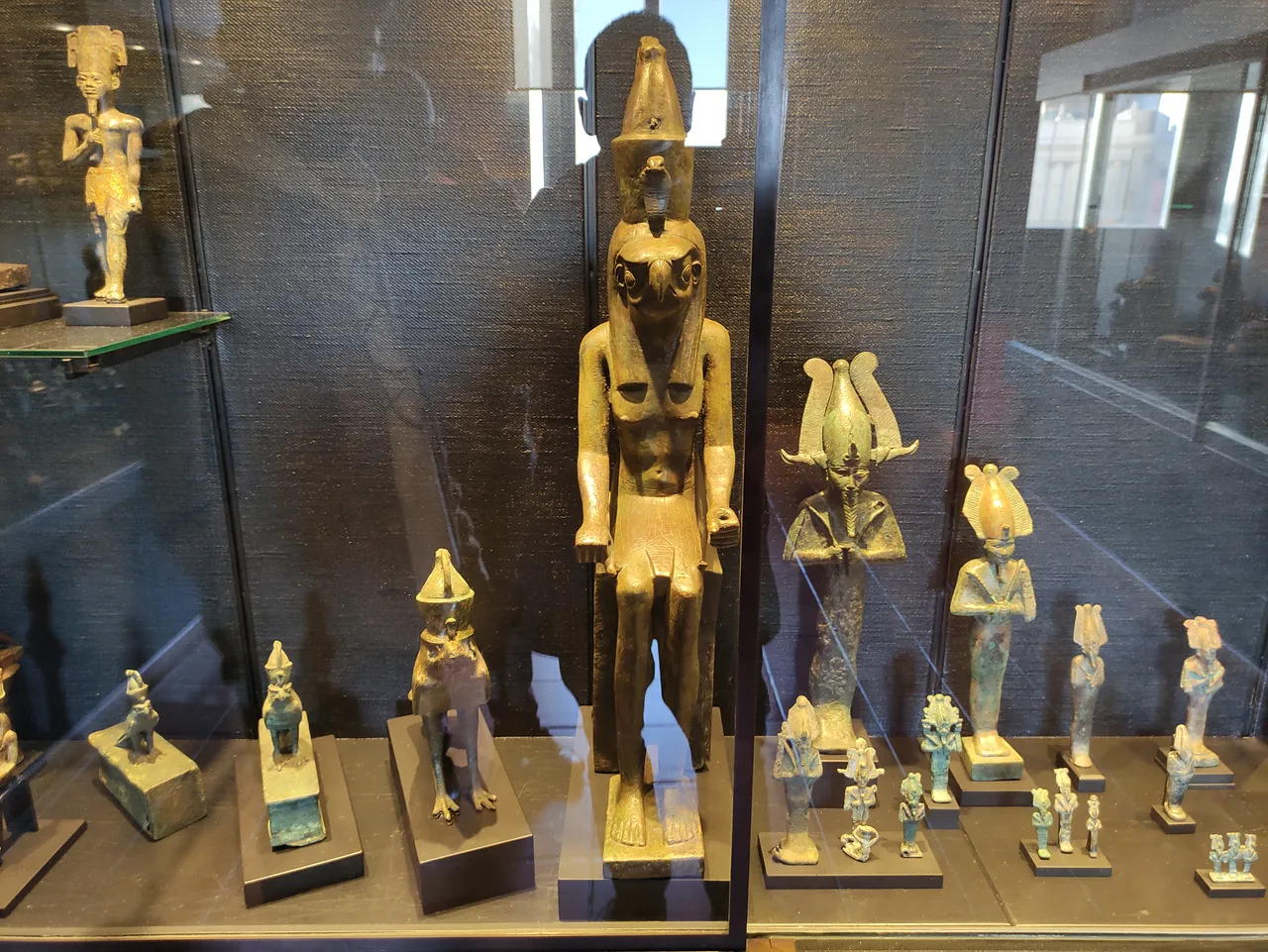
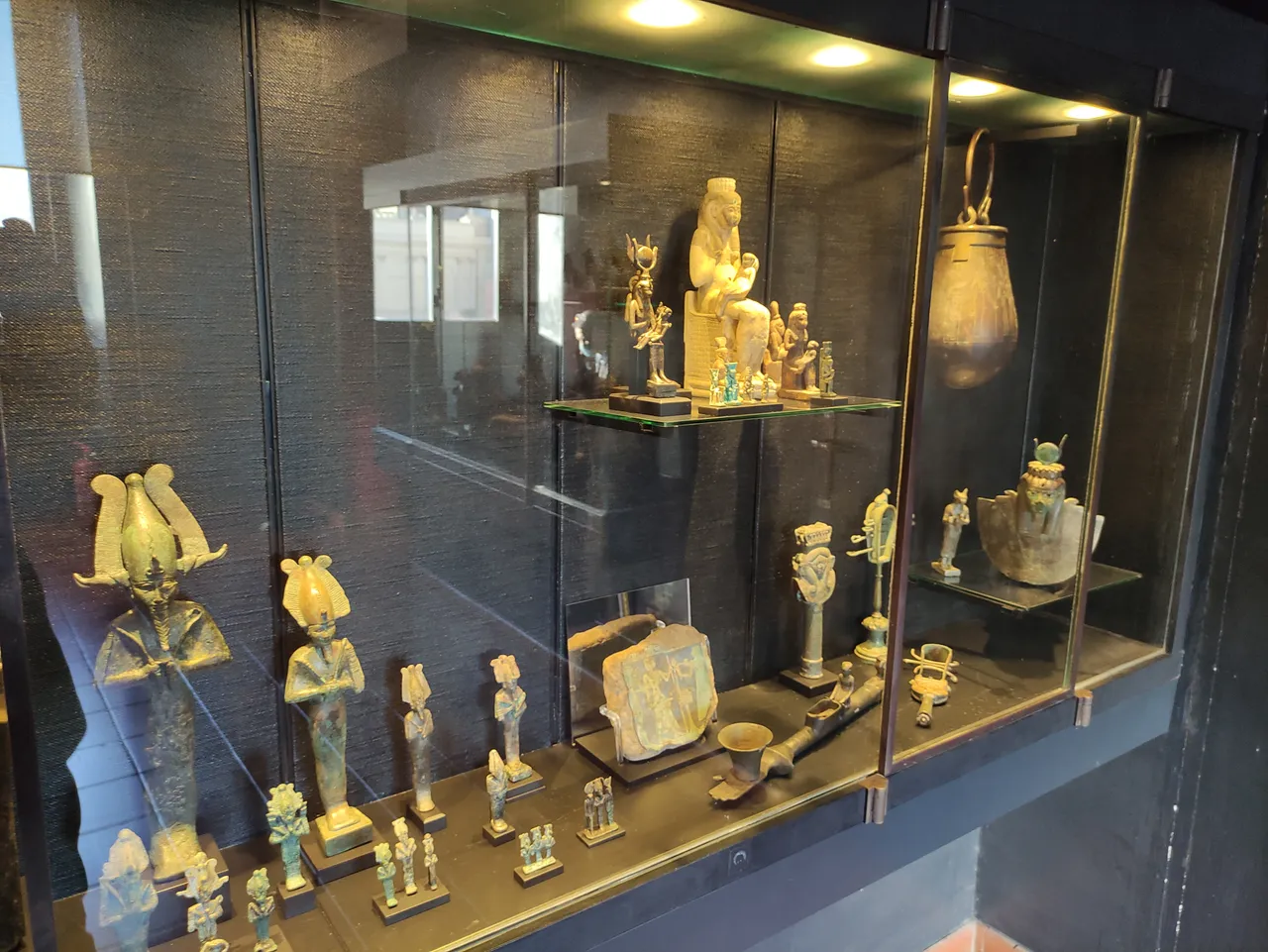
Conclusions/Conclusioni
Visiting the Vatican Musems was a truly incredible experience for me, the amount of works preserved inside these rooms is truly impressive and leaves you breathless. As I said at the beginning of the post, I believe that it is a place to visit at least once in a lifetime regardless of one's theological beliefs.
Visitare i usei vaticani è stata un'esperienza veramente incredibile per me, la quantità di opere conservate all'inerno di queste stanze è veramente impressionante e lascia senza fiato. Come dicevo all'inizio del post, penso che sia un posto da visitare almeno una volta nella vita a prescindere dalle proprie convinzioni teologiche.

